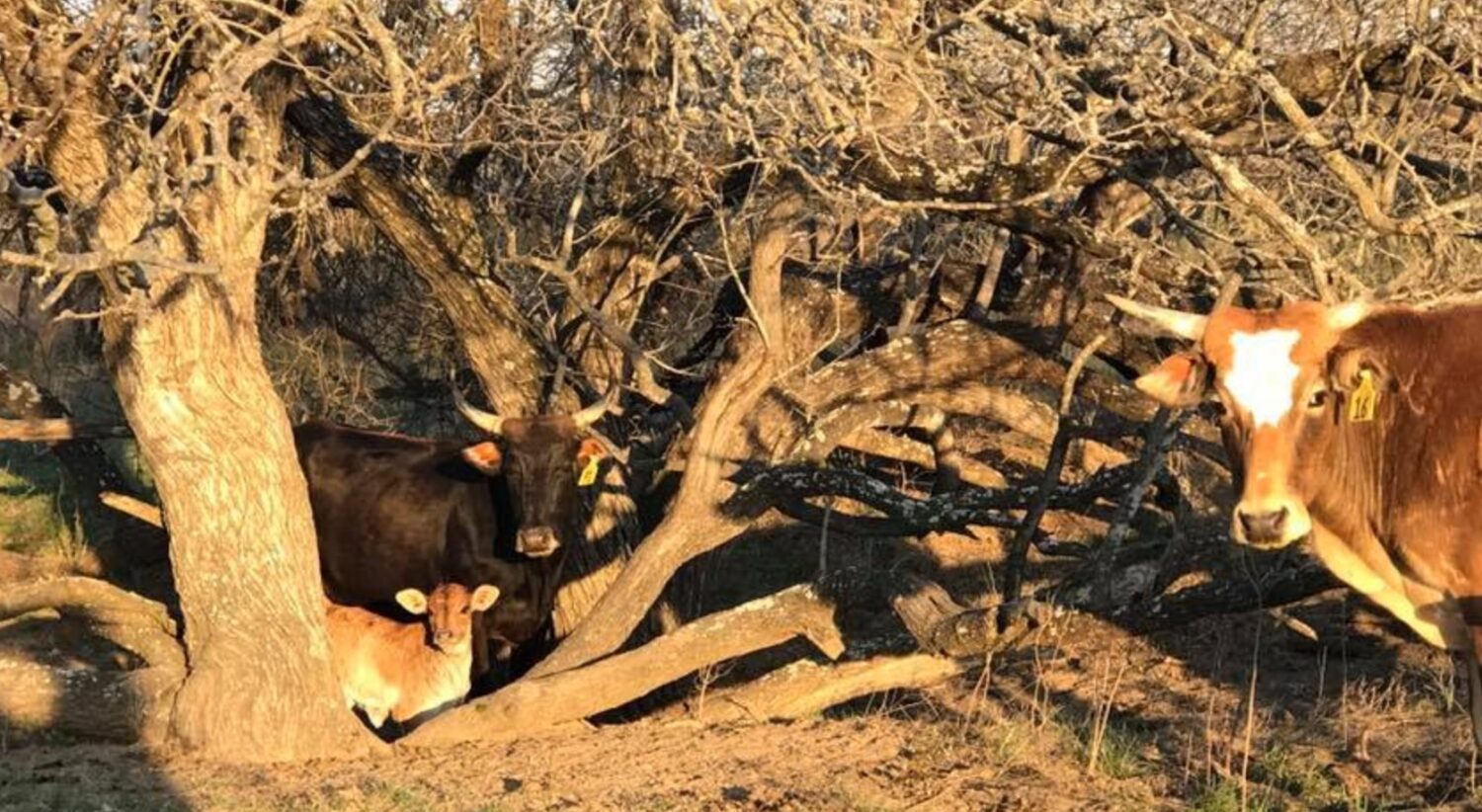August 4, 2018
Terry Lidral in collaboration with Heidi Ward*, D. V. M., U. of Arkansas Cooperative Extension
Bovine gastrointestinal parasites will always be a pesky problem as long as there are cattle to serve as their hosts. These parasites are more prevalent in moist, cooler weather. But they are survivors and they can sometimes find a way into your cattle’s stomachs even in the middle of a severe drought. Where there is grazing pasture, there are gastrointestinal parasites.
Parasites live in the stomach of the infected animal where they attack the gut wall to consume blood. In a vulnerable animal, parasites can cause loss of condition through nutrition deprivation, diarrhea, and in severely weakened animals, it can lead to death. Reproductive problems are also a side effect of problematic parasite infection. Good nutrition programs, pasture management and scheduled medical treatment can go a long way to preventing health issues and loss of valuable stock.
There are certain factors that can increase the risk of internal parasite damage. The cattle that sustain major negative physical effects from gastrointestinal parasites commonly have an under-developed or weakened immune system. For those of us in the bucking stock business, the primary areas of concern are calves and young cattle, newly lactating cows and animals under stress.
The intestinal systems of calves and young cattle have not had time to build up an immunity to these parasites, making them more vulnerable to internal damage. Bulls are known to be more susceptible to negative effects from parasites in their gut than cows, who for some reason, tend to develop natural defenses against them. But the physical demands on a newly lactating cow can tend to break down these defenses and make this group more vulnerable as well. Bulls in competition, especially yearlings and two-year olds, are under stress and dealing with higher physical demands, factors that may well lower their immunity to negative effects of gastrointestinal invaders.
The most common types of gastrointestinal parasites that infect cattle are roundworms, tapeworms and flukes. Each one has its own unique lifecycle. Since flukes need a specific snail to complete their lifecycle, they can live only near a water source.
Infection happens through ingestion of the parasite. Their developmental stages before they enter the host may differ, but the effects of these parasites are basically similar. The common transmission factor is infested manure. The more manure, the more parasites. Cattle in an overcrowded or dung filled pasture or enclosure face a much higher risk of exposure and infestation. If a water or forage source becomes contaminated by manure infected by parasites, it too becomes a means of transmission.
Spring and Fall months tend to be the most active months for parasite infestation due to the cooler temperatures and increase in moisture. But these pests are hardy and some can survive even the most severe weather conditions. During drought, the piles of manure dropped by cattle can serve as a source of moisture for hardy parasites and some larvae can live through a deep freeze to become active when the weather warms up. A pasture infected when cold weather hits can remain infected when the ground thaws out. In hot, dry weather, the moist areas where grass grows around manure improve the larvaes’ chance of survival – and the chances that cattle will ingest them through grazing.
Rainy areas have a higher incidence of parasites because of the wet conditions that provide the perfect environment for egg and larvae development. The constant liquification of manure in the pastures and enclosures by rainfall enlarges the area of infestation and increases the threat of infection.
The foundation of good health in cattle is to provide animals with a balanced ration and/or quality forage. It is suggested that feedstuffs should be tested for nutritional content. As for boosting the immune system, availability of vitamins, minerals and other nutrients are directly related with how well the animal can respond to parasites. Vitamin A, D and B are important in developing the immunity against parasites. Minerals like iron, zinc, sodium, potassium and phosphorus are needed for proper functioning of the immune system to ward off negative effects.
Pasture management is a major factor in dealing with the spread of parasites. Rotating grazing areas and keeping cattle, especially calves and young cattle, in pastures and enclosures that are not overcrowded or over- moist will lessen their exposure to infectious larvae. Being housed on dry lots keeps the burden low.
But the above prevention programs are not enough by themselves. It is important to deworm during peak worm season. The most commonly accepted method is to deworm in the fall to help the cattle over the winter and again in the spring to help in the summer. It is important to know that drug resistance will always be a concern. So, choosing the right dewormer is essemtoa;.
Combating gastrointestinal parasites must be approached by using a combination of methods. Collaborating with a veterinarian to develop a herd health plan can go a long way in helping to control the ever present threat to your valuable cattle.
*Dr. Heidi Ward is an assistant professor and Extension veterinarian for the University of Arkansas System Division of Agriculture. She received her DVM from Oklahoma State University Center for Veterinary Health Sciences. Dr. Ward serves as the Beef Quality Assurance Coordinator and 4-H Veterinary Science Coordinator for Arkansas.




Great article, with applications to the general cattle industry, not “just” bucking stock (which it can also affect, of course). Shows just how much folks care about their individual animals as well as their herds.